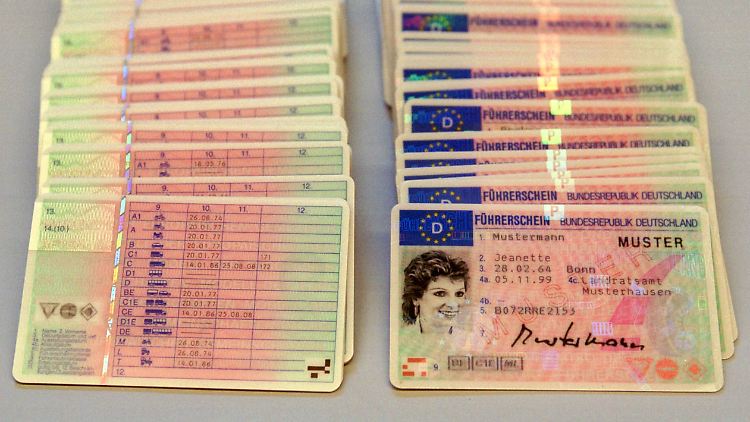A Guide To Fear Of The Practical Test From Beginning To End
Overcoming the Fear of the Practical Test: Strategies for Success
The dry run is a vital section of numerous certification procedures, particularly in driving, aviation, health care, and other technical fields. For numerous individuals, the stress and anxiety connected with dry runs can be immobilizing, turning a simple presentation of skills into a source of fear. Understanding the roots of this fear and employing effective techniques can significantly improve your performance and confidence during practical examinations.
Understanding the Fear of Practical Tests
The worry of practical tests is a diverse issue rooted in psychological, emotional, and situational elements. Below are some typical factors that contribute to this anxiety:
1. Fear of Judgment
- Lots of individuals fret about the opinions of inspectors or peers. This worry of negative examination can lead to self-doubt.
2. Fear of Failure
- The stakes can feel high for dry runs, often impacting profession opportunities, licenses, or certifications. The idea of stopping working can be overwhelming.
3. Absence of Preparation
- Insufficient practice or preparation can exacerbate sensations of stress and anxiety, developing a self-perpetuating cycle of insecurity.
4. High Expectations
- The desire to perform perfectly can heighten stress, leading people to fixate on making errors rather than concentrating on their strengths and skills.
Methods to Manage Fear Before Your Practical Test
There are a number of techniques that people can adopt to reduce their fears and enhance their chances of success on the practical test.
Preparation and Practice
- Start Early: Allocate an adequate quantity of time to get ready for the practical test. Create a study and practice schedule that gradually constructs your abilities.
- Hands-On Experience: Seek chances for real-life practice. This could consist of mock tests, simulations, or supervised practice with knowledgeable equivalents.
Mind Management
- Visualization Techniques: Employ mental rehearsal by envisioning yourself successfully finishing the test. This can construct self-confidence and lower stress and anxiety.
- Mindfulness and Relaxation: Practice breathing workouts, meditation, or yoga to support emotions and preserve focus.
Favorable Affirmation
- Change unfavorable self-thoughts with positive affirmations. Rather of stating, “I will fail,” think about saying, “I am well-prepared and capable.”
Seek Support
- Discuss your issues with others who have undergone similar tests. Their experiences can supply valuable insights and motivation.
Comprehend the Testing Environment
- Familiarize yourself with the test location and procedures. Understanding what to expect can reduce click the next site and anxiety and help you feel more in control.
Set Realistic Goals
- Focus on your individual development rather than excellence. Understand that everybody learns at their own speed and making errors becomes part of the knowing process.
What to Expect During the Practical Test
Understanding the structure of the practical test can help decrease stress and anxiety. Here's a general overview:
Stage
Description
Orientation
Intro to the inspector, describing the test format.
Demonstration
Showing your abilities based on the requirements of the test.
Evaluation
The inspector observes and ranks your performance.
Feedback
Receive useful feedback to comprehend locations of strength and enhancement.
Types of Practical Tests
Dry run can vary extensively depending upon the field. Here are a few typical examples:
- Driving Tests: Assessing road skills and knowledge of traffic rules.
- Medical examinations: Demonstrating clinical abilities and client interactions.
- Technical Evaluations: Performing specific jobs associated with devices operation.
- Trade Certifications: Involving hands-on abilities in fields like plumbing, welding, or woodworking.
Regularly Asked Questions (FAQs)
Q1: What should I do if I don't pass my practical test?
A: It's vital to approach failure as a learning opportunity. Review what failed, seek feedback from the examiner, and create a plan to attend to those areas before retaking the test.
Q2: How can I prepare if I'm brief on time?
A: Focus on targeted practice in crucial locations. Utilize flashcards, online resources, and extensive short courses created to assist you enhance rapidly.
Q3: Is it normal to feel anxious before a practical test?
A: Yes, it is entirely typical. The majority of people experience some level of stress and anxiety before a performance. Utilizing the strategies mentioned can assist alleviate this sensation.
Q4: Can visualization truly aid with efficiency?
A: Yes, visualization can improve your performance by developing a mental path for success. Athletes and entertainers often use this method to build self-confidence.
The fear of dry runs is a common experience, but it doesn't need to determine the outcome of your performance. By proactively preparing, managing stress and anxiety, embracing a favorable mindset, and comprehending what to expect, people can change their fear into empowering experiences. With dedication and practice, the dry run can shift from a source of worry to a demonstration of one's hard-earned skills and understanding. Keep in mind, preparation is essential, and there's constantly space for development and enhancement.
